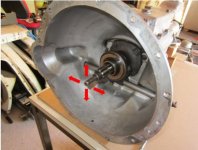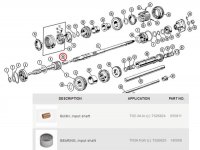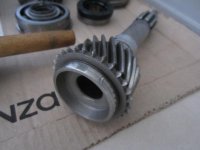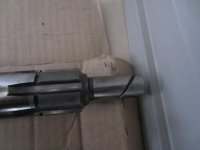Hello everyone,
The restoration of my TR3A continues slowly but surely. The chassis will soon be on its wheels again.
I start to take care of the gearbox in parallel. It is a gearbox without OD.
I did not intend to open it but after cleaning and inspection I noticed that the input shaft had a radial clearance of about ~0.12" measured at its end.
Do you think this is OK or do I have to disassemble and change the bearing (s)?
The restoration of my TR3A continues slowly but surely. The chassis will soon be on its wheels again.
I start to take care of the gearbox in parallel. It is a gearbox without OD.
I did not intend to open it but after cleaning and inspection I noticed that the input shaft had a radial clearance of about ~0.12" measured at its end.
Do you think this is OK or do I have to disassemble and change the bearing (s)?

 Hi Guest!
Hi Guest!

 smilie in place of the real @
smilie in place of the real @
 Pretty Please - add it to our Events forum(s) and add to the calendar! >>
Pretty Please - add it to our Events forum(s) and add to the calendar! >> 



